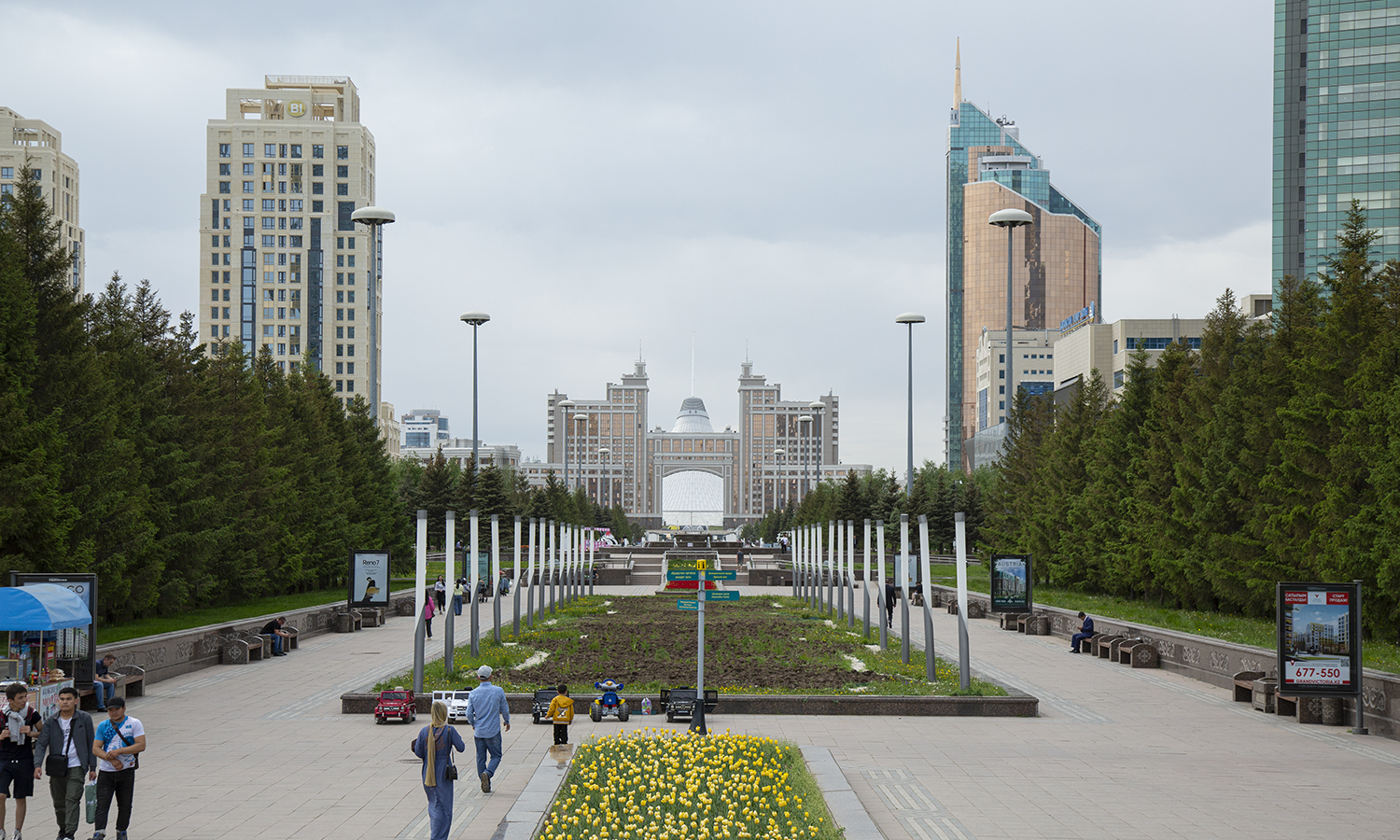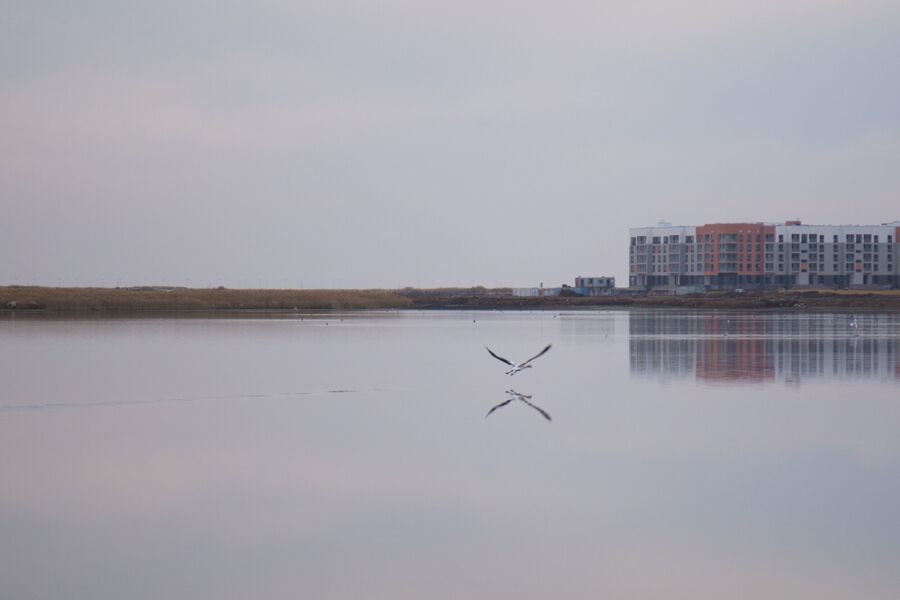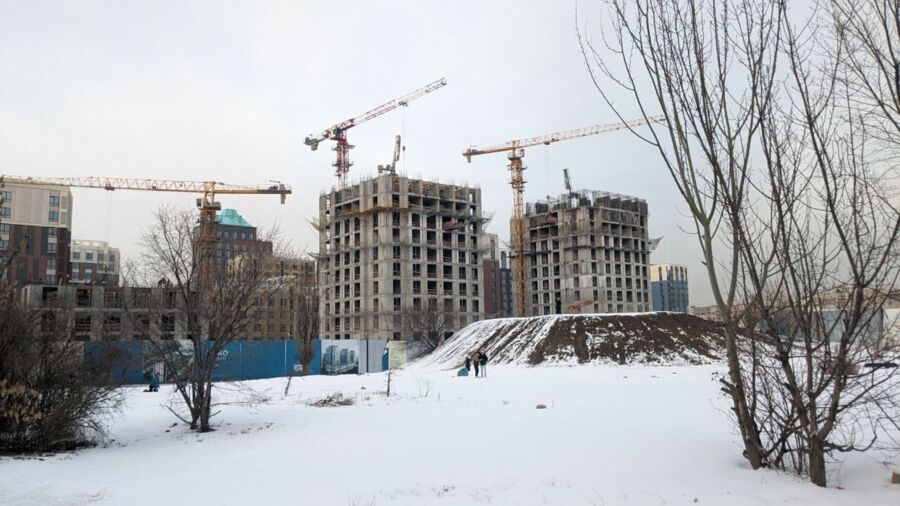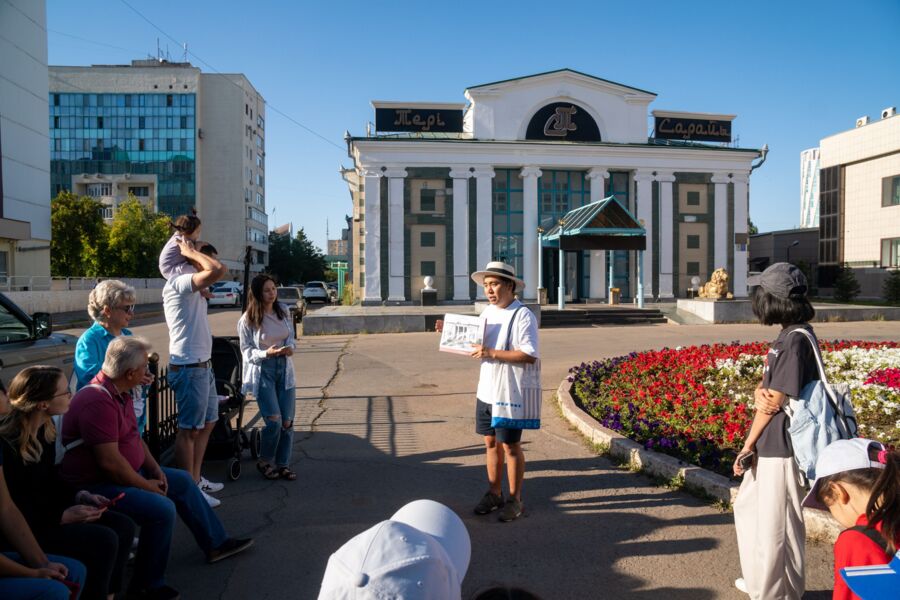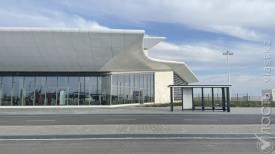Vlast met with Temirtas Iskakov, researcher and author of the platform Fading.TSE, to discuss the capital’s development, the importance of preserving the identities of Kazakhstan’s cities as they all become more and more like Astana, and the preservation of architectural heritage in light of discourse on decolonization.
In an interview three years ago, you told us that the idea of “old town” or historical centers is not popular in Astana. Has this changed at all since then?
I think that it has changed. And in relation to the situation in the world and in the region, the progressive part of society is talking more about decolonization and the question of the legacy of the old town is becoming even more sensitive. There is a legacy, whether good or bad, that needs to be preserved. But, nevertheless, even if these questions have become more sensitive, they made working with objects of historic-cultural heritage in Kazakhstan even more topical. This question cannot be postponed, it needs to be further discussed. People always are nostalgic of the olden days, because it is characteristic of any society. The older a society becomes, the more social and cultural capital it accumulates. There is a demand for historical memory in Kazakhstan. Monuments are themselves actors of the city’s historical memory, so we must study, preserve, and rethink them.
What do you connect this high demand for historical memory with?
Kazakhstan is a young state. In the last 30 years we have tried to answer various questions: “Who are we as a society?”; “Who are we as a nation?”. And in relation to this, if we look at history before independence, a large part of the residents were deprived of the right to a historical memory. That is, history was rewritten, historical monuments were taken down. After independence, we should have gotten back this right, but how we deal with this right and how we work with this legacy appear to be open-ended questions. Mainly, however, we still need to answer questions like: “who are we?”; “where are we going?”; “where are we coming from?”. I think that people are eager to explore these questions. Everyone subconsciously wants to study their own family history, one’s personal past, and the past of one’s country, because these are inseparable. While we can say that we are fighting for the preservation of a museum or a park near a home because it is dear to our personal memories, at the same time it is a part of the history of the city and the country. This is all part of one whole.
What are the current trends between the right and left banks of the Ishim River?
In the past few years, the city has changed because development has gone at a Stakhanovite pace. But if the more visible urbanization campaign earlier focused mainly on the left bank, now developers and administrators are turning to the old part of the city, the original focus of the Soviet urbanization campaign.
The recent acceleration of urbanization is happening evenly across the city. Yet, this development needs to be balanced with how we work with the existing urban fabric and how to improve it so that it does not degrade.
Currently, many are talking about “infill development” (construction within unused and underutilized lands within existing development patterns, ed.), especially in Astana, but this is such a general term. My problem is not with neighborhoods becoming more compact and population density increasing, it’s with “thoughtless development” that fails to properly take public goods and infrastructure into account. The architectural and urban planning techniques we are employing in Astana’s neighborhoods are incongruous with their contexts and, unfortunately, this is only getting worse.
There isn’t really any discussion with the community or any transportation or infrastructure specialists. There is absolutely no transparent form of communication because, generally, in Kazakhstan and Astana there are no protocols, procedures or precedents for public hearings, which are largely done for show.
How has the filling of Lake Taldykol affected the people and activists of Astana?
Since August of 2020, our platform has worked with the SOS Taldykol grassroots movement to provide reliable information and carry out public monitoring alongside independent experts and lawyers to work with the city administration’s work. I’ve taken part in two meetings with the mayor, but the working groups they promised to establish never materialized. Denizens and activists were skeptical of announcements of reforms. Our hope, at last, died.
Does this not cause learned helplessness?
Not learned helplessness, there just isn’t yet a critical mass. I believe that every resident of Astana feels problems related to the city’s development. Residents are confronted with this when they’re stuck in traffic jams, when they’re suffocating from the winter smog, when they’re unable to enroll their children into a school.
People recognize all of these issues but never fully realize their interconnectedness, that these problems lie in urban development and architectural planning. We need to make the entire system of decision making more transparent if we’re going to see change.
A lot of cities around Kazakhstan’s regions are currently being built up like the capital. Will this not turn the cities into Astana? Is this not erasing their identities?
Some feel that Astana is guilty of causing this pattern of development when, in fact, I think that Astana was the first victim of this process. Astana residents suffered from this fatal embrace between local officials and real estate developers, who wiped the city of its identity over the course of the 2000s and 2010s. The people had no rights in the planning of their own city. Everyone else, especially in Almaty, watched with schadenfreude as a soulless capital city was being built. But now these soulless housing complexes and neighborhood plans are being used everywhere in Kazakhstan, including in Almaty.
The soulless, inhuman development outside Almaty’s historic “Golden Quarter” has been astonishing. The regions now risk finding themselves in the exact same trap that Astana fell into.
You work on urban projects also in Ekibastuz and authored the book “The Architecture of Atyrau.” Why is it so important to talk about urban history and architecture? Why exactly did you choose these cities?
Besides Astana, other cities are facing similar problems. Under Soviet urbanization, many industrial agglomerations developed suburbs and micro-districts outside of the Soviet city center. A “capital-style development” is arriving in economically wealthy regions like Ekibastuz and Atyrau and, as a result, the historic parts of the city are being lost. This is a tragedy not only for these cities, but for all of Kazakhstan. Atyrau, for example, is one of our oldest cities, with a 400 years history.
Since 2021, we have been going to different cities, not just Atyrau and Ekibastuz, but Karaganda, Petropavlovsk, Shchuchinsk, and issued joint statements with local activists. This has helped focus on common issues, such as illegal and arbitrary land development.
In these instances, educational work is key. For instance, we led an instagram page to talk to Ekibastuz residents about the city and their relationship with its young yet prolific urban spaces. We asked: “what does it mean to be an Ekibastuzian?” and we received a wide range of answers, each infused with a sense of local pride.
This was a good learning experience for us because social networks work differently in the regions than in Almaty and Astana. In the regions, activists are lonelier because there is an informational vacuum. Social media just isn’t an alternative form of mass media there, it’s only used for selling things and personal entertainment. We managed to amass a small audience and, through careful work, there is a prospect of doing something more.
In Atyrau we went down a different path. Colleagues from Urban Forum Kazakhstan helped us catalog the city’s historically and architecturally valuable buildings. They decided that the main task would be to document and create an archive for local residents. They also came up with a mobile app, Atyrau Go, with three walking paths for users to get acquainted with these architectural monuments. Unfortunately, some of the buildings featured in the book are still in ruins and some have been demolished.
Our fieldwork initially invited skepticism from the local activists and historians we worked with because many of them thought that all of this was being done for show. In reality, however, if you spoke with the author of the project Atyrau Go, Alia Zholdasova, she would tell you that many residents don’t know their own city. When people learn about the historic monuments and urban centers of their hometowns, they start to look at their city in a completely different way.
Kazakhstanis can also be domestic tourists, and we want to go to different cities in the country and get to know each region’s specific architecture and cultural spaces, to think of a city space through its architecture.
Being an Astana resident, I do not want to travel to Almaty and again find myself in “Astana-style” new buildings, where you feel like an ant in a stone jungle.
What’s the reason that these cities are all being developed the same way? Is it because a few companies are in charge of all construction?
Yes, developers have found the most cost-effective and efficient working mechanisms while specialists and decision-makers are rotating from one region to another. After all, mayors are appointed from the top: one day you are the governor of a region in the west, the day after you’re the mayor of Astana. And when they move, they bring about the same blueprint, with the same companies and the same contractors. While citizens continue to live in their cities, their decision-makers rotate, according to presidential plans.
Who is responsible for protecting the identity of a city? The local government, urban planners, the architects, or the people? And, in your experience, who is most interested in this task?
Each local government and every department of culture has so-called inspectorates for the protection of monuments and state centers for the study and preservation of historical and cultural heritage. But our laws on heritage still trace back to the old Soviet laws, which didn’t regulate what “heritage” is. The laws details a categorization of buildings and monuments, but there is no clearly defined criteria or protocol for how to preserve them.
These committees would ideally carry out academic research to identify buildings to be protected because of their historical significance. Unfortunately, most of these organizations and institutions are not independent, existing within a very rigid system of state administration. And even when buildings are included on these official ‘lists,’ buildings are demolished anyway. In other words, the official mechanisms aren’t working.
What is “city identity” besides monuments and historical buildings?
The identity of the city is multifaceted. For example, it’s how one would answer the question “what is Astana?” - for some, it’s a city of new buildings, and for others, it’s a city of government officials, or it reminds of the cold winds from the steppe. All of these descriptions are people’s conceptions of the city in relation to its differences with other cities. There is also an “urban identity” in how exactly inhabitants of a city represent themselves as residents of that city. And still, there is also an “identity with the city”, a psychological construct that is part of an individual’s personal identity, when the city is perceived as context for one’s own individual biography.
For instance, if some beautiful monument is built on the outskirts of Astana, it will have an effect on its entire immediate neighborhood, affecting its identity. Even the roughest urban environment can be changed by residents who choose not to be indifferent. That is, the more that we expand cultural spaces for meeting and debating and conducting events, the more that we can transform these spaces by filling them up with meaning and ideas.
Many cities in Kazakhstan showcase a great deal of Soviet and Russian Imperial heritage in their architecture. Does this evoke a sense of dissonance?
Even before the war in Ukraine, the discourse about decolonization had been developing in academic circles. As a researcher, I have long understood the so-called “problematic legacy” of our cities, stemming from their Soviet and colonial pasts. Questions about this legacy, in my opinion, became more topical after the start of the war, but I still don’t think that there is much of a negative perception among the general public. And at Fading.TSE we always say we can look at buildings from all kinds of angles.
A building is just four walls and a roof. We, the users and observers, give buildings a meaning. A monument from the Stalinist repression period could lead observers to say “it’s awful, this is a monument to the crimes of Stalin.” Yet these buildings simultaneously serve as memorials to the victims. If we don’t preserve them and instead demolish them in an attempt to distance ourselves from this chapter in our history, then we’re destroying spaces to discuss these atrocities. We can draw an analogy to Almaty’s city administration building, engulfed in flames during Bloody January, or the ruins of the Presidential residence, which were dismantled without any discussion with the public.
We are following the path of least resistance, “out of sight, out of mind,” but it doesn’t work like that. If we take these buildings away, erase them, then we will not work through this trauma. One of the goals of decolonization is to chronicle our own history, culture, and heritage, not simply demolishing buildings. If there is ever a public consensus when the majority of citizens say, “you know, it seems that this is not necessary, so we should take it down and build something else,” then why not? But for us to get to that, we need to have clearly working mechanisms for public discussion and participation. If everyone in Almaty and Kazakhstan agrees to tear down a building and to install a monument dedicated to Bloody January, then great. What happened instead is that they tore down one building and erected a new monument without ever asking for public input. This is a faulty practice that settles neither our moral and ethical questions nor our historical trauma.
As part of our Fading.TSE platform, we regularly conduct guided excursions around Astana. When I guide tours, it’s important for me to show those buildings when I talk about the research being conducted on the Soviet repression of people in Akmolinsk.
This initiative not only shows these buildings and discusses their history and architecture, but is also growing internal tourism. We are forming a community of people who discuss historical events in relation to our present urban environment. This is an important exercise of our social and historical responsibilities: that we, the living, are responsible for remembering these victims.
This article was originally published in Russian and is also available in Kazakh. This is an edited version translated by Grant Thieroff. This is one of several stories published by Vlast as part of “Regions of Kazakhstan”, a project that explores the various manifestations of inequality between the regions and large cities of Kazakhstan.
Поддержите журналистику, которой доверяют.
